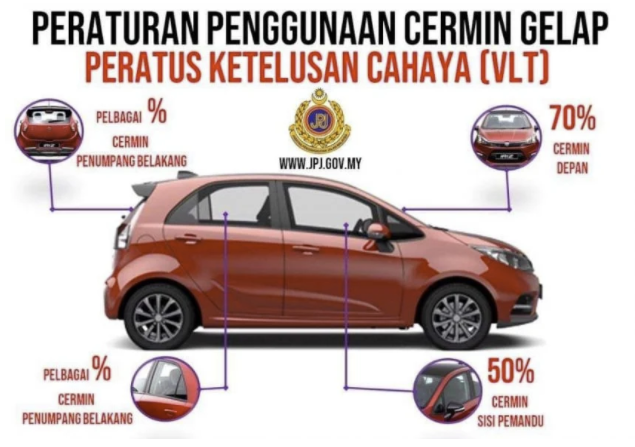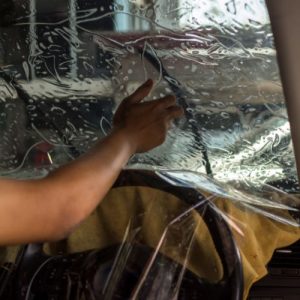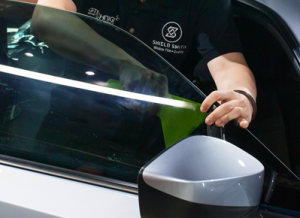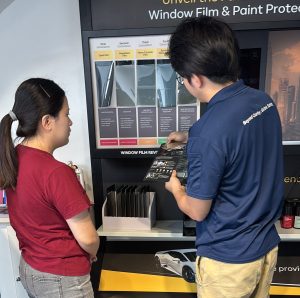VLT window tint
is one of the most misunderstood aspects of car tinting in Malaysia. While many car owners assume VLT simply refers to how dark their windows look, it actually stands for Visible Light Transmission—the percentage of visible light that can pass through your window film and glass. The lower the VLT, the darker the tint appears, but the real importance of VLT goes beyond appearance. It directly affects your visibility, safety—especially during night driving—and your compliance with JPJ regulations.
In Malaysia’s hot climate, choosing the right VLT window tint isn’t just about staying cool or adding privacy—it’s about making an informed decision that balances comfort, safety, and legality. Some films may look similar in shade but have very different VLT ratings, which could make a huge difference in performance and compliance. This article will break down what VLT really means, how it differs from simple tint darkness, and help you choose the ideal film for your car that performs well and passes inspection.
What is VLT?
VLT stands for Visible Light Transmission. It refers to the percentage of visible light that can pass through a window film and glass combined.
In simple terms:
-
Higher VLT (%) = More light passes through = Brighter and clearer
-
Lower VLT (%) = Less light passes through = Darker appearance
For example:
-
A tint with 70% VLT lets in 70% of light – very light and almost clear.
-
A tint with 15% VLT only allows 15% of light – very dark, more privacy.
So, VLT is a scientific measurement, not just a visual estimation.
How Does VLT Affect Tint Darkness?
This is where many car owners get confused. While VLT and darkness are related, they are not exactly the same.
You might see a film that looks dark but has high heat rejection, while another may look lighter but feel just as cool. That’s because tint color and material technology also play a role.
For example:
-
Eclipse Series (dyed film): Looks dark but may have higher VLT and lower heat rejection.
-
Divine Series (sputtered + ceramic): May appear lighter but have better heat control with low VLT and high IR rejection.
So, don’t judge the film only by appearance—look at the spec sheet!
JPJ Tinting Regulations (Malaysia)
n Malaysia, the Road Transport Department (JPJ) has strict guidelines on how dark your windows can be:
-
Front windscreen: At least 70% VLT
-
Front side windows: At least 50% VLT
-
Rear windows & rear windscreen: No restriction
Make sure you select a film that complies with these VLT levels if you want to avoid fines, especially during JPJ inspections.

VLT vs. Heat Rejection – What Matters More?
Most people want tint for two main reasons:
-
To block heat
-
To get privacy
While VLT measures how much light is let in, heat rejection depends on other factors like:
-
IRR (Infrared Rejection)
-
TSER (Total Solar Energy Rejection)
-
UV rejection
This is why films like Alaska Series or Prime Series can be light in color but still reject up to 90%+ of IR heat.
So, if you live in hot climates like Malaysia, don’t just go for darker tint—look for smart films that block heat without compromising visibility.
Final Thoughts
When choosing window film in Malaysia, don’t confused by how dark it looks. VLT tells you how much light passes through, but heat control depends on much more. Always ask for the full spec sheet, check for JPJ compliance, and make sure the film meets both your comfort and legal needs.
🛡️ Shield Smith experts are here to help you choose the right film—one that balances heat rejection, visibility, and legal compliance.





